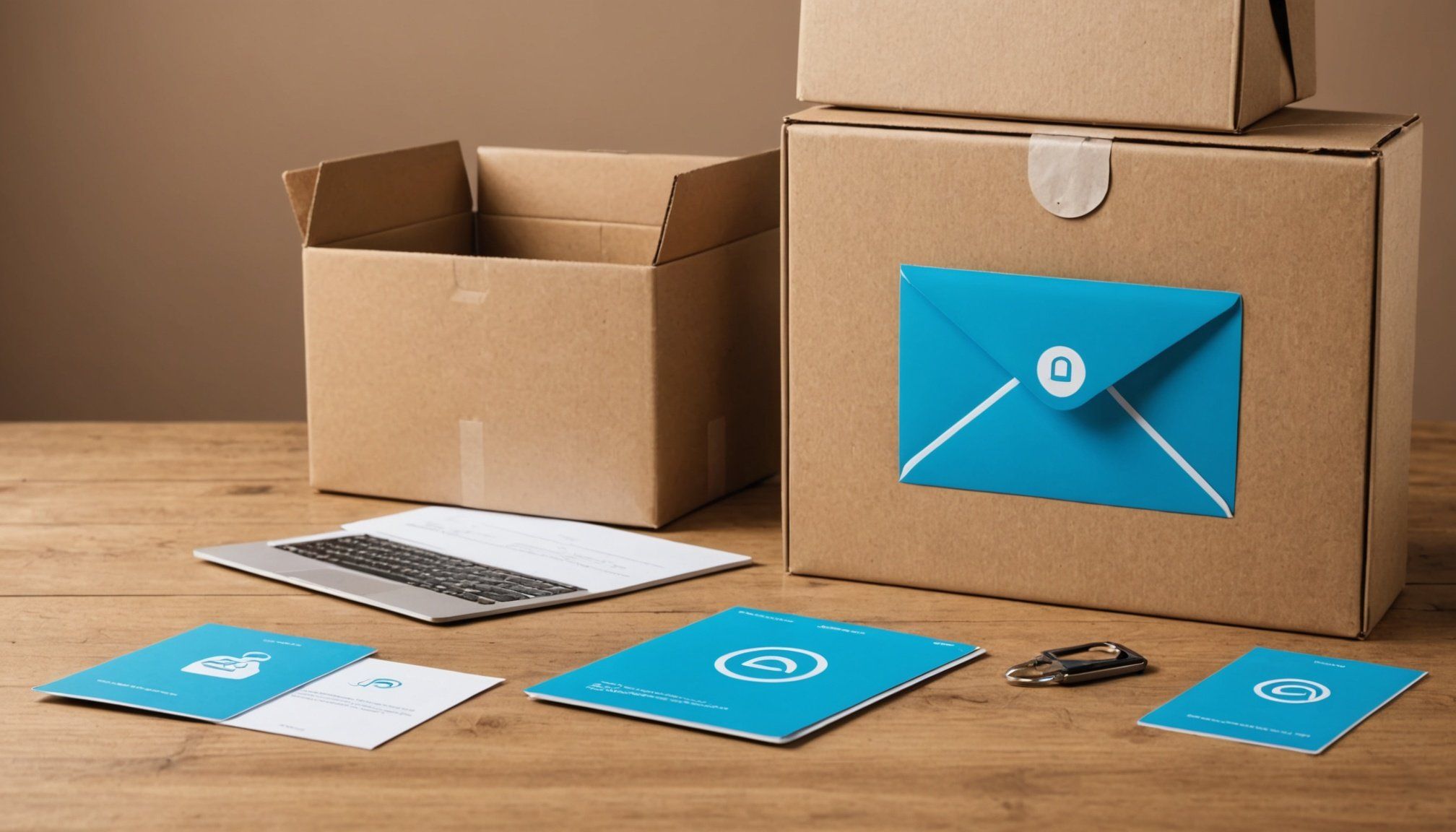Unlocking Email Marketing Potential: Innovative Tactics for UK Subscription Box Services to Highlight New Features
The Power of Welcome Emails: Setting the Tone for Your Subscription Box Service
When it comes to email marketing for subscription box services, the welcome email is more than just a courtesy; it’s a crucial step in building a lasting relationship with your new subscribers. Here’s why sending a welcome email series is essential and how you can do it effectively.
Immediate Engagement
Sending a welcome email as soon as the user subscribes is vital. According to recent studies, 74.4% of subscribers expect a welcome email immediately after signing up, and 45% of first-time purchases are made within 24 hours of sign-up[1].
Have you seen this : Mastering Craft: Top Instagram Tactics for UK Breweries to Highlight Their Brewing Expertise
For instance, Topshop sends out a series of four welcome emails. The first email offers a warm welcome along with a first-time discount, setting the tone for a rewarding relationship. The subsequent emails introduce the brand, highlight their unique selling points (USPs), and showcase their products and influencer collaborations[1].
Personalization and Incentives
Personalization is key to making your welcome emails stand out. By segmenting your audience based on demographics, purchase history, and browsing behavior, you can create emails that feel personally relevant to each subscriber.
In parallel : Ultimate Mobile App Marketing Tactics for UK Travel Agencies to Achieve Unmatched Success
Birchbox, for example, includes three emails in their welcome series. The first email invites new users to purchase their subscription box at a discounted price, the second explains how to sign up for the subscription and earn loyalty points, and the third provides more information about the brand and its products[1].
Incentivizing your welcome emails with discounts, free trials, or insightful resources can also boost engagement. Sur La Table sends a welcome email with a 15% off coupon code and information about their cooking classes and online store perks[1].
Crafting Engaging Email Content: Tips and Strategies
Engaging email content is what keeps your subscribers coming back for more. Here are some strategies to make your emails compelling and interactive.
Compelling Subject Lines
Subject lines are the first thing your subscribers see, so they need to be attention-grabbing. Keep them under 40 characters to ensure they display fully on mobile devices. For example, “Get Your 20% Off Code” or “Complete Your Purchase” are more effective than generic “Shop Now” buttons[3].
Interactive Elements
Interactive emails are becoming increasingly popular, and for good reason. They allow subscribers to engage with your content directly from their inbox, increasing click-through rates and overall engagement.
Consider using embedded quizzes, polls, or carousels that let subscribers swipe through products without leaving the email. A travel agency, for instance, could send an email with an embedded destination quiz that helps subscribers find their dream vacation without ever leaving the email[5].
Gamification
Gamification is another trend that can make your emails more fun and engaging. Brands can create interactive treasure hunts within emails where subscribers search for hidden discounts or offers. For example, you could start your email by telling subscribers to look for a particular emoji, which, when clicked, takes them to a special offer or surprise[4].
Understanding and Segmenting Your Audience
To create emails that resonate with your customers, you need to understand who they are and what they like.
Demographics, Purchase History, and Browsing Behavior
Segmenting your audience based on demographics (age, location, gender), purchase history, and browsing behavior helps you tailor your emails to specific groups.
For example, a clothing store might promote winter coats to customers in cold regions and summer styles to those in warmer areas. If a customer regularly buys organic skin care products, you can send them emails about new all-natural beauty launches[3].
Personalization Based on Data
Using customer data to create personalized emails drives action and enhances the shopping experience. By combining insights from shopping history, website behavior, and engagement patterns, you can recommend products and offers that feel personally chosen for each subscriber.
Here’s a detailed example of how you can segment your audience:
-
Demographics:
-
Age: Tailor product recommendations based on age groups (e.g., younger subscribers might be interested in trendy items, while older subscribers might prefer classic styles).
-
Location: Promote seasonal products based on the subscriber’s location (e.g., winter coats in cold regions).
-
Gender: Offer gender-specific products or promotions.
-
Purchase History:
-
Regularly bought items: Send emails about new products in the same category (e.g., if a subscriber often buys organic skin care, send emails about new organic beauty launches).
-
Spending level: Promote items within the subscriber’s typical price range.
-
Browsing Behavior:
-
Frequently viewed items: Send emails featuring customer reviews or special offers on these items (e.g., if a subscriber repeatedly views running shoes, send an email with a discount on athletic footwear)[3].
Designing and Optimizing Emails for Mobile
Given that most subscribers read emails on mobile devices, ensuring your emails are mobile-friendly is crucial.
Responsive Design
Use responsive design that automatically adjusts layouts, font sizes, and image widths to fit different screen sizes. Make sure buttons are large enough to tap easily with thumbs.
High-Quality Visuals
Include high-quality product photos and videos that show products from multiple angles and in real-world settings. Compress images properly to maintain quality while ensuring fast loading times. Test every campaign across different devices and email clients before sending to ensure consistent display[3].
Leveraging Social Media and Automated Tools
Social media and automated tools can significantly enhance your email marketing efforts.
Automated DM Tools
Tools like ManyChat can help you turn Instagram followers into email subscribers. By setting up an automation that delivers a landing page link to people who comment on your post with a specific phrase, you can grow your email list efficiently. This method not only adds subscribers but also increases engagement on your social media posts[4].
Integrating Social Media with Email Marketing
Using social media to drive email sign-ups is a powerful strategy. For example, you can add a link in your Instagram bio and ask followers to check it out whenever you post. Automated DMs can be even more effective, encouraging people to comment and receive a link to a landing page[4].
Data Privacy and Compliance: Staying Ahead of Regulations
As email marketing evolves, so do the regulations surrounding data privacy and compliance.
Staying Compliant
Ensure that your email list is clean and verified. Double opt-in sign-up processes prevent fake addresses and ensure only interested people join your list. This leads to better delivery rates, higher engagement, and fewer spam complaints[3].
Disposable Email Addresses
With the potential introduction of Shielded emails by Google, disposable email addresses may become more prevalent. Regularly removing inactive subscribers from your list will be crucial to maintaining its integrity[4].
Practical Insights and Actionable Advice
Here are some practical tips and actionable advice to help you unlock the full potential of your email marketing campaigns:
Create a Welcome Email Series
- Immediate Welcome: Send a welcome email as soon as the user subscribes.
- Personalized Content: Segment your audience and personalize the content based on demographics, purchase history, and browsing behavior.
- Incentives: Offer discounts, free trials, or insightful resources to incentivize engagement.
Use Interactive Elements
- Gamification: Create interactive treasure hunts or choose-your-own-adventure emails to engage subscribers.
- Embedded Quizzes and Polls: Use interactive elements like quizzes and polls to keep subscribers engaged within the email.
Optimize for Mobile
- Responsive Design: Ensure your emails look great on small screens.
- High-Quality Visuals: Include high-quality photos and videos that load quickly.
Leverage Social Media
- Automated DM Tools: Use tools like ManyChat to turn Instagram followers into email subscribers.
- Social Media Integration: Drive email sign-ups through social media by adding links in your bio and using automated DMs.
Table: Comparing Welcome Email Strategies of Different Brands
| Brand | Number of Emails | Content of Each Email |
|---|---|---|
| Topshop | 4 | 1. Warm welcome with first-time discount, 2. Brand introduction and USPs, 3. Social media presence, 4. Product and influencer collaborations[1] |
| Office | 3 | 1. Welcome and USPs, 2. Popular products, 3. Birthday gift email request[1] |
| Birchbox | 3 | 1. Discounted subscription box, 2. Subscription sign-up and loyalty points, 3. Brand and product information[1] |
| Sur La Table | 2 | 1. 15% off promotion, cooking classes, and store details, 2. Brand journey and mission statement[1] |
| Reebok | 3 | 1. Welcome with 15% off coupon, 2. Preference setting and offer reminder, 3. Product recommendations and loyalty program[1] |
Quotes and Anecdotes
- “Sending out a series of welcome emails is a lot like treating your guests with warm hospitality. After inviting the guests inside your house, you ‘converse’ with them and offer them cookies, cold coffee, or ice cream. That’s exactly how you leave a good impression on your new guests (subscribers).” – Uplers[1]
- “Interactive emails alter the relationship between the user and the brand. Where previously, users had to click through to the website, now, within interactive email, a subscriber can engage from the comfort of their inbox.” – Tech Digest[5]
- “By grouping subscribers based on shared traits and behaviors, you can create messages that feel personally relevant to each group.” – BigCommerce[3]
Email marketing is a powerful tool for subscription box services, offering a direct and personalized way to engage with customers. By crafting compelling welcome emails, using interactive elements, segmenting your audience, optimizing for mobile, and leveraging social media, you can significantly enhance your email marketing campaigns.
Remember, the key to successful email marketing is to make each email feel like a personal conversation with your customer. Use data thoughtfully, keep your emails engaging and interactive, and always ensure compliance with data privacy regulations. With these strategies, you can unlock the full potential of your email marketing and build a loyal customer base for your subscription box service.











